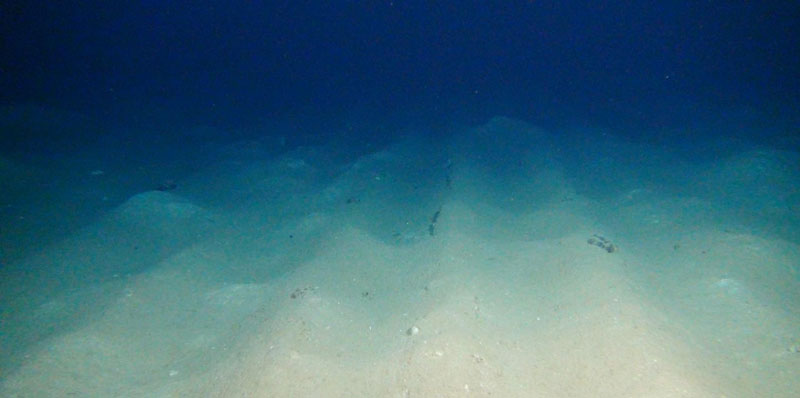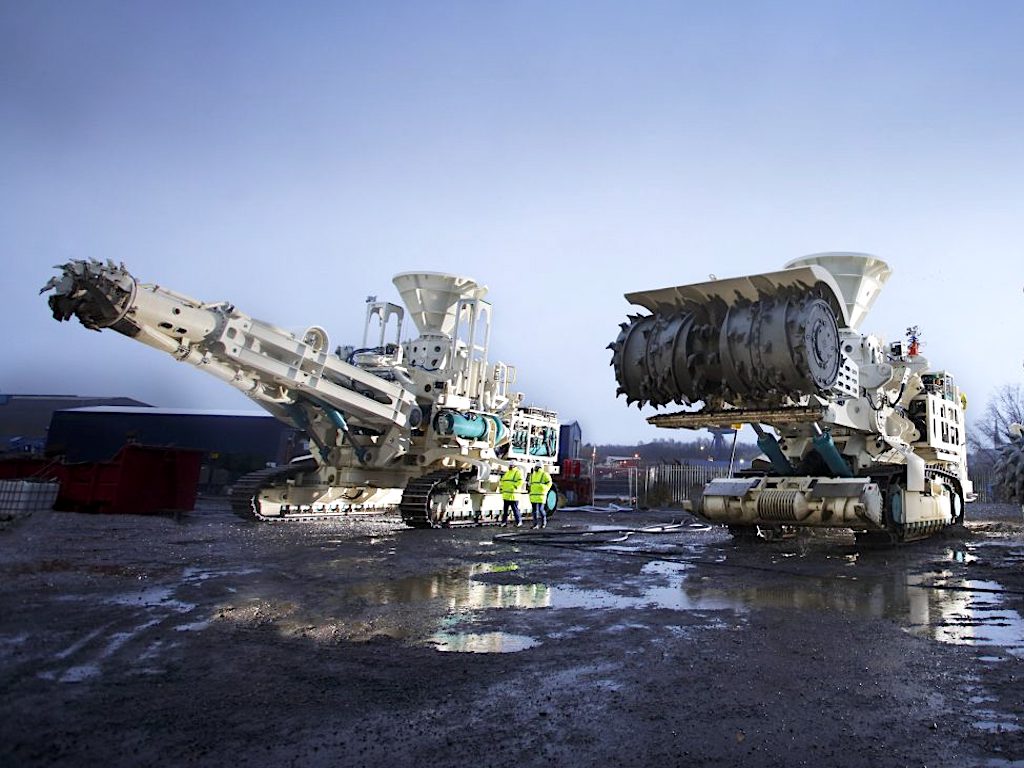5 Mins Read
By: Sarah Derouin
New research reveals a deep-sea mining experiment that took place 26 years ago still has significant and persistent impacts on benthic life.
Mining for rare metals can involve a good amount of detective work. It can take time and skill to find the most abundant sources. But in the deep ocean, metallic deposits sit atop the seafloor in full view—a tantalizing sight for those interested in harvesting polymetallic nodules.
Scooping up nodules requires mechanical skimming of the ocean floor, which disrupts the upper centimeters of sediment. This disturbance has rippling effects on sea life, but the severity and duration of ecological impact have remained largely unknown.
In the 26-year-old tracks, microbial activity was reduced fourfold.
But in a new study, researchers dove deep to look at mining’s impact on microbial communities. They found that decades later, benthic microorganisms haven’t recovered, and researchers estimate it would take at least 50 years for some ecosystem functions to return to predisturbed conditions.
Disturbing the Peace
In 1989, scientists began a deep-sea mining experiment called the Disturbance and Recolonization experiment (DISCOL) in the Peru Basin of the South Pacific Ocean. The study simulated nodule mining by dragging a plough-harrow device over an 11-square-kilometer area, cutting and reworking the upper 10 to 15 centimeters of seafloor sediments.

Since the start of DISCOL, scientists have been visiting the basin to monitor the effects of mining on benthic life. In a new study in Science Advances, researchers focused on the smaller communities of organisms found at depth.
“We tried to answer how long a disturbance of the deep-sea floor ecosystem by simulated nodule mining could affect benthic microorganisms and their role in the ecosystem,” said Tobias Vonnahme, a marine biologist at the Arctic University of Norway, and Antje Boetius, director of the Alfred Wegener Institute. (The researchers responded to email requests from Eos as a group and will be referred to as “the team.”)
Monitoring Microorganisms
At the DISCOL site, the team deployed their cameras and sampling equipment and got their first look at the seafloor. “First, we saw undisturbed seafloor covered by manganese nodules and larger animals, such as octopuses, fish, and colorful sea cucumbers,” they said. But the troughs soon came into view—even 26 years after the DISCOL experiment, the plough tracks were pronounced.
The researchers took sediment cores of the seafloor both within disturbed area and in fresh, 5-day-old tracks. “Thanks to novel robotic technologies, we were able to quantify the long-lasting impacts on microbial diversity and function in relation to seafloor integrity,” they noted.
After analyzing the cores from the seafloor, the team found that in the 26-year-old tracks, microbial activity was reduced fourfold. Additionally, the mass of microorganisms was reduced by about 30% in the top 1 centimeter of disturbed sediment. In fresh tracks, the microbes were reduced by about half. They also found lower organic matter turnover, reduced nitrogen cycling, and lower microbial growth rates in disturbed areas.
“Benthic life—including microorganisms, which carry essential functions such as nutrient recycling—need more than 26 years to recover from the loss of seafloor integrity,” said the team.
They add that on the basis of the microbial activities they observed in the most disturbed areas, it would take at least 50 years for some functions to return. “Considering the low sedimentation rates, [full] recovery will take much longer,” they noted.

“The self-healing of the ecosystem is very limited,” they concluded.
This is a novel study, said Maria Pachiadaki, an assistant scientist at the Woods Hole Oceanographic Institution who was not part of the study. She added that it’s the first time researchers have focused on the deep-sea mining impacts on the microbial community.
Pachiadaki and her colleagues previously hypothesized that these types of “disturbances would also impact microbes, plus ecosystem functions, because microbes mediate the entire biogeochemistry of their environment.” She said this study confirms their suspicions and gives a long-term record of what happens after a mining disturbance.
“The self-healing of the ecosystem is very limited.”
“Life as we know it starts with microbes,” said Pachiadaki. She said one striking finding of the study was that the carbon fixation rates—or how inorganic carbon is transformed to organic carbon—decreased substantially in disturbed sites.
Pachiadaki noted another substantial finding was the identity of the microorganisms in the benthic sediment. Specifically, the microbial communities were enriched with nitrifiers. “It’s a group of organisms that make nitrogen bioavailable,” she explained. “Nitrogen is one of the essential micronutrients…and the limiting factor of productivity.”
The Future of Deep-Sea Mining
“Our work shows the potential long-term impact of deep-sea mining when seafloor integrity is reduced,” said the team, adding that their research can be used to shape guidelines for deep-sea mining explorations.
“This is an excellent example of how scientists can guide policy makers,” said Pachiadaki.
“If there is pressure moving towards deep-sea mining, there needs to be an impact assessment,” she said. “And it can’t be a short-term process—it needs to be a long-term evaluation.”

This story originally appeared in AGU’s Eos Magazine and is republished here as part of Covering Climate Now, a global journalistic collaboration to strengthen coverage of the climate story.
Lead image courtesy of Nautilus Minerals.




